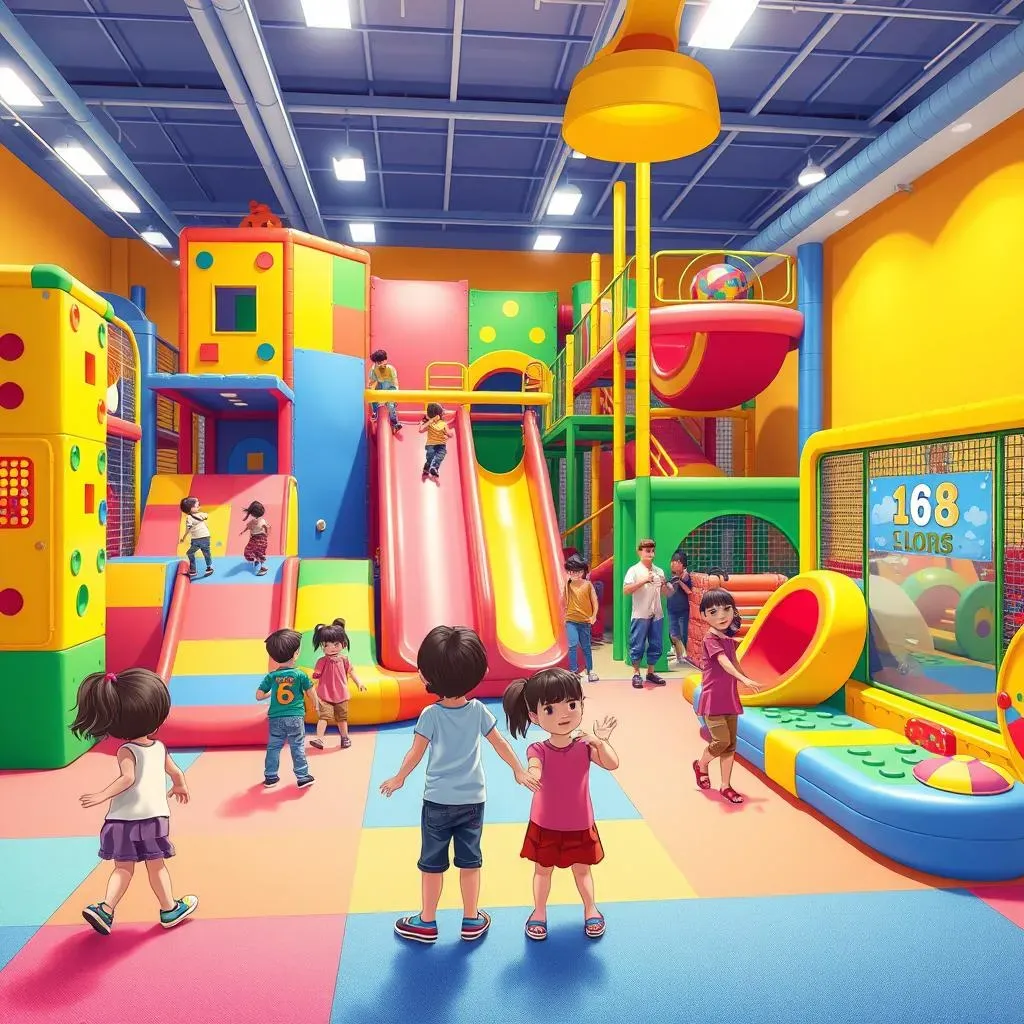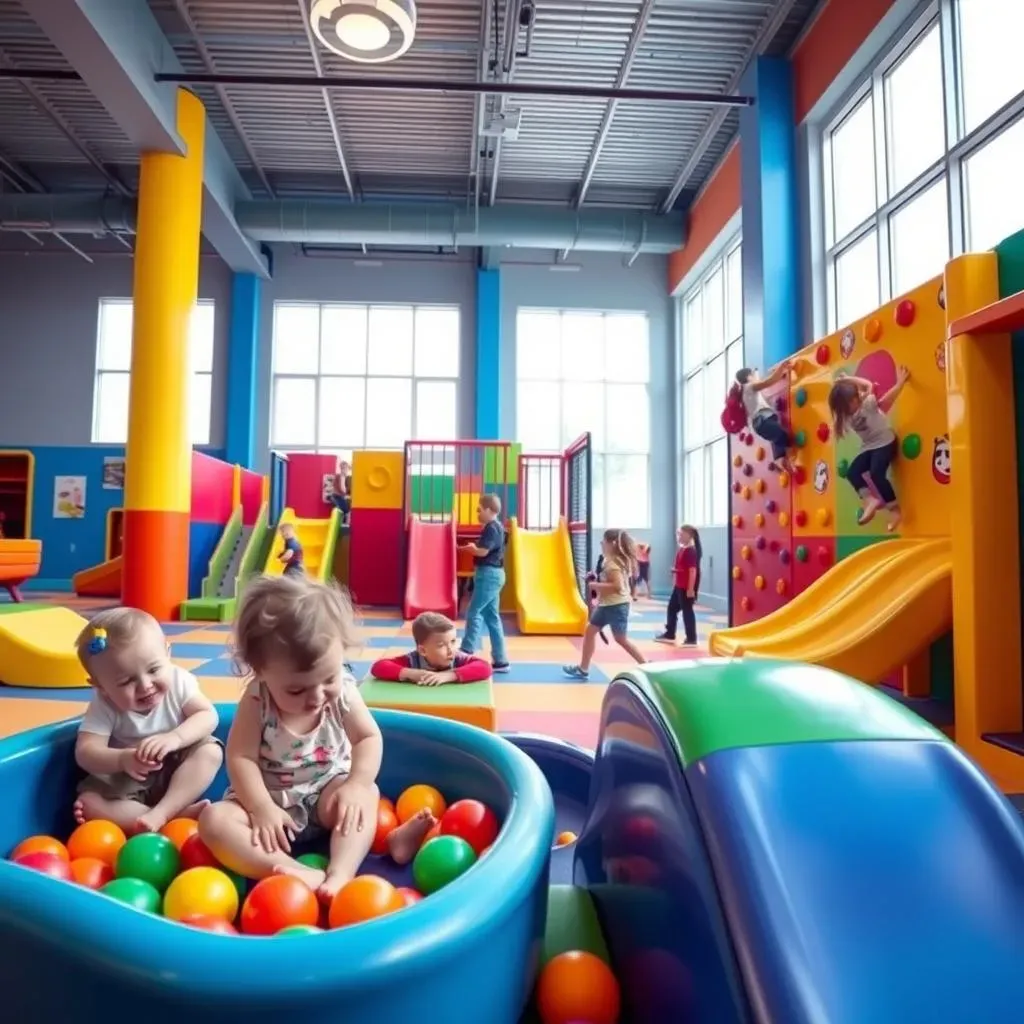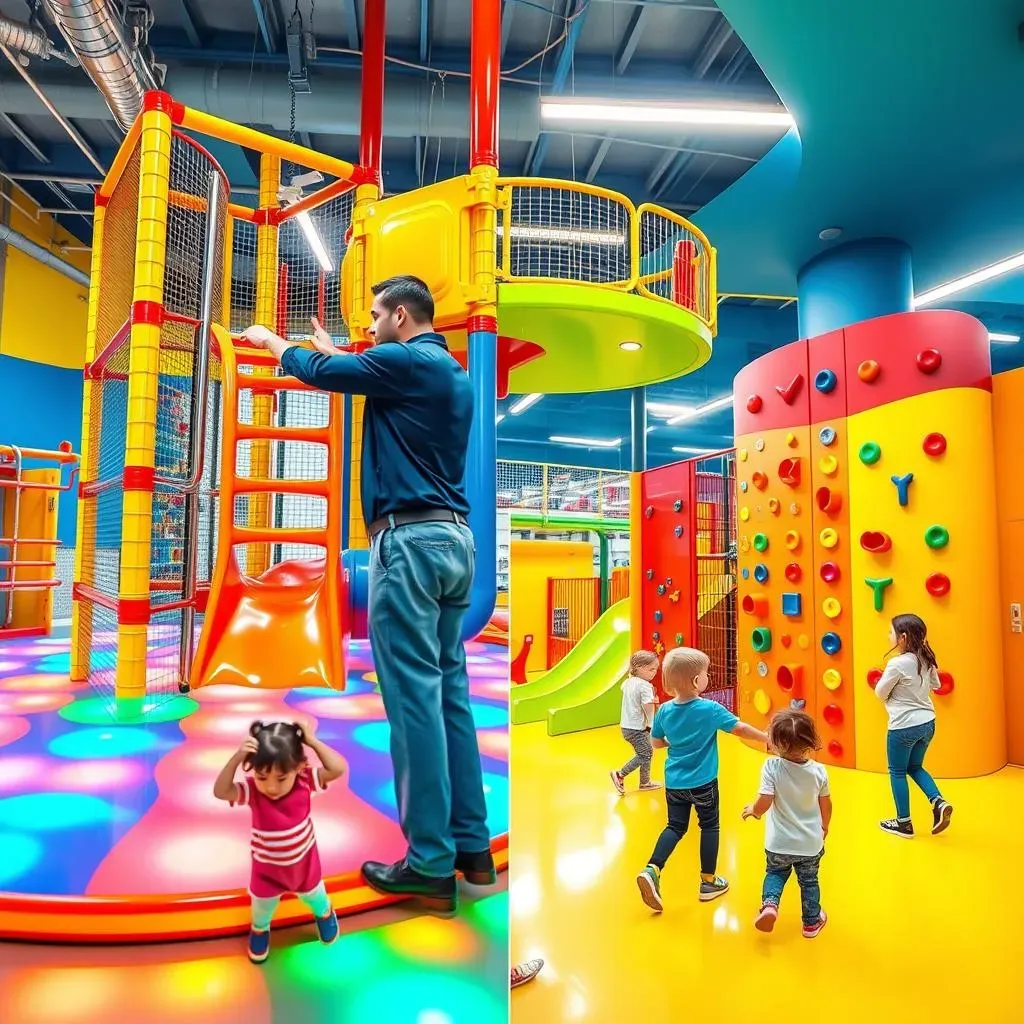Table of Contents
Ever wondered how to create the ultimate fun zone for kids, a place where energy is burned, imaginations soar, and smiles are endless? The secret lies in choosing the right indoor playground play equipment. But with so many options out there, from towering climbers to soft play areas, how do you make the best choices for your space, budget, and the safety of your little adventurers? This guide is your roadmap to navigating the exciting world of indoor playgrounds. We'll explore everything from selecting equipment that meets the highest safety standards to designing a layout that encourages active play and creativity. Discover how to maintain your equipment for long-lasting fun and learn how to upgrade your playground to keep kids engaged for years to come. Whether you're planning a new family entertainment center or revamping an existing play area, get ready to unlock the secrets to creating an unforgettable indoor playground experience. Let's dive in!
Selecting Safe and Engaging Indoor Playground Equipment

Selecting Safe and Engaging Indoor Playground Equipment
Prioritizing Safety First: Key Considerations
Safety isn't just a box to check; it's the foundation of any great indoor playground. When you're sifting through indoor playground play equipment, your first question should always be: "Does this meet or exceed safety standards?" Look for certifications from reputable organizations like ASTM or TÜV. These certifications mean the equipment has been rigorously tested for things like fall heights, material safety, and structural integrity. Don't just take the manufacturer's word for it – do your own research and verify those certifications.
Beyond certifications, think about the materials themselves. Are they non-toxic? Are they durable enough to withstand constant use? Soft, padded surfaces are a must under and around climbing structures and slides. Regular inspections are also key. Even the safest equipment needs to be checked regularly for wear and tear, loose bolts, and other potential hazards.
Age-Appropriateness and Developmental Needs
A playground that's thrilling for a 10-year-old might be terrifying (and dangerous) for a toddler. Consider the age range of the children who will be using the indoor playground play equipment and choose pieces that are appropriate for their developmental stages. Toddler areas should have soft, low-to-the-ground structures that encourage exploration and gross motor skills. Older kids might crave more challenging climbing walls, slides, and obstacle courses.
Think about the different types of play you want to encourage. Do you want to promote physical activity, imaginative play, or social interaction? Choose equipment that aligns with your goals. For example, a climbing structure can improve strength and coordination, while a playhouse can spark creativity and role-playing. Interactive games and activities can encourage teamwork and problem-solving.
Balancing Thrill and Skill: Creating Engaging Play Experiences
An engaging indoor playground play equipment strikes a balance between thrill and skill. It should be challenging enough to keep kids interested, but not so difficult that they become frustrated or discouraged. Variety is key. Offer a mix of different types of equipment, such as climbing structures, slides, tunnels, and interactive games. This will cater to a wider range of interests and abilities.
Consider incorporating elements of risk, but in a controlled environment. For example, a slightly higher climbing wall or a more challenging obstacle course can provide a sense of accomplishment when conquered. Just make sure that there are appropriate safety measures in place, such as padding and supervision.
Designing a Custom Indoor Playground with the Right Equipment

Designing a Custom Indoor Playground with the Right Equipment
Understanding Your Space and Target Audience
So, you're ready to create a custom indoor playground? Awesome! First things first: let's talk space. Really get to know your area. Measure everything – length, width, height. Note any columns, windows, or doorways that might impact your design. Think about the flow of traffic. How will kids move from one area to another? You want to avoid bottlenecks and create a smooth, intuitive experience.
Then, zero in on your target audience. Are you designing for toddlers, older kids, or a mix of ages? This will heavily influence the type of indoor playground play equipment you choose. A toddler area will need soft, low-to-the-ground structures, while older kids might crave climbing walls and more challenging obstacles. Thinking about accessibility is important too. Inclusive design ensures that children of all abilities can enjoy the playground.
Selecting Equipment That Fits Your Vision
Now for the fun part: picking out the equipment! This is where your vision really comes to life. Start by brainstorming the types of play experiences you want to offer. Do you want to encourage physical activity, imaginative play, social interaction, or all of the above? Once you have a clear idea of your goals, you can start selecting equipment that aligns with your vision. Consider a mix of different types of equipment, such as climbing structures, slides, tunnels, interactive games, and soft play areas. This will cater to a wider range of interests and abilities.
Don't be afraid to think outside the box! Customization is key to creating a truly unique and memorable indoor playground. Work with a reputable manufacturer to design equipment that is tailored to your specific space and needs. Consider incorporating your brand colors, logos, and themes to create a cohesive and immersive experience. And remember, safety should always be your top priority. Make sure that all equipment meets or exceeds safety standards and is appropriate for the age range of the children who will be using it.
Maintaining and Upgrading Your Indoor Playground Play Equipment

Maintaining and Upgrading Your Indoor Playground Play Equipment
Regular Maintenance: The Key to Longevity
Think of your indoor playground play equipment like a car – regular maintenance keeps it running smoothly and safely. Develop a routine inspection schedule, checking for loose bolts, worn padding, and any signs of damage. Pay special attention to high-traffic areas like slides and climbing structures. Clean the equipment regularly to prevent the spread of germs and bacteria. Use a mild soap and water solution, and avoid harsh chemicals that could damage the materials. Keep a log of all maintenance activities, including dates, findings, and any repairs that were made. This will help you track the overall condition of your equipment and identify potential problems early on.
Don't underestimate the power of preventative maintenance. Simple tasks like tightening bolts and lubricating moving parts can prevent more serious problems down the road. Train your staff to identify potential hazards and report them immediately. Encourage them to be proactive in keeping the playground clean and safe. A well-maintained playground is not only safer, but it also looks more inviting and appealing to customers.
- Daily: Visual inspection for obvious hazards, wipe down high-touch surfaces.
- Weekly: Tighten loose bolts, check padding, clean equipment.
- Monthly: Deep clean, lubricate moving parts, review maintenance log.
- Annually: Professional inspection, major repairs or replacements.
Smart Upgrades: Keeping the Fun Fresh
Even the best indoor playground play equipment can start to feel stale after a while. That's where smart upgrades come in! Consider adding new features to keep kids engaged and excited. This could be anything from a new climbing wall to an interactive gaming system. Think about incorporating elements that promote different types of play, such as physical activity, imaginative play, and social interaction. Get feedback from your customers. What do they like about the playground? What would they like to see added or changed? Their input can be invaluable in helping you make informed decisions about upgrades.
Upgrading your indoor playground doesn't have to break the bank. Simple changes like adding new paint, replacing worn padding, or rearranging the layout can make a big difference. Consider incorporating seasonal themes or special events to keep things fresh and exciting. For example, you could decorate the playground for Halloween or host a special holiday-themed event. Remember, the goal is to create a fun and engaging environment that kids will want to come back to again and again.
Upgrade Type | Examples | Benefits |
|---|---|---|
New Equipment | Interactive games, climbing walls, obstacle courses | Attract new customers, increase engagement |
Theming | Seasonal decorations, themed events | Create a unique and memorable experience |
Layout Changes | Rearrange equipment, create new play areas | Improve flow, maximize space |
Maximizing Fun and Safety with Quality Indoor Playground Equipment

Maximizing Fun and Safety with Quality Indoor Playground Equipment
Creating a Balanced Play Environment
So, you've got your space, your equipment, and your maintenance plan dialed in. Now, how do you actually make sure kids are having a blast while staying safe? It's all about creating a balanced play environment. Think of it as a recipe – you need the right ingredients in the right proportions. Indoor playground play equipment should be arranged to encourage a variety of activities, from running and jumping to climbing and sliding. Create distinct zones for different age groups and play styles. A quiet corner with soft play equipment can provide a calming space for younger children, while a more challenging obstacle course can keep older kids engaged. Consider the flow of traffic. How will kids move from one area to another? You want to avoid bottlenecks and create a smooth, intuitive experience.
Supervision is key. Make sure that there are enough staff members on hand to monitor the playground and enforce safety rules. Train your staff to identify potential hazards and intervene when necessary. Encourage them to interact with the children and create a positive and supportive play environment. And don't forget the parents! Provide comfortable seating areas where they can relax and watch their children play. A well-designed playground is one that caters to the needs of both children and adults.
Training Staff for Safety and Engagement
Your staff are the unsung heroes of your indoor playground. They're the ones who ensure that kids are playing safely and having a good time. Invest in comprehensive training programs that cover everything from basic first aid to conflict resolution. Teach your staff how to properly supervise the playground and enforce safety rules. Emphasize the importance of being proactive in identifying and addressing potential hazards. Encourage them to interact with the children and create a positive and supportive play environment. Role-playing exercises can be a great way to prepare your staff for different scenarios.
Consider cross-training your staff so that they can handle a variety of tasks. This will give you more flexibility in scheduling and ensure that there are always enough people on hand to meet the needs of your customers. Regular refresher courses can help your staff stay up-to-date on the latest safety guidelines and best practices. And don't forget to recognize and reward your staff for their hard work and dedication. A happy and well-trained staff is essential for creating a positive and safe play environment.
Training Topic | Key Areas Covered | Benefits |
|---|---|---|
Safety Protocols | Emergency procedures, hazard identification, first aid | Reduces accidents, ensures quick response to emergencies |
Supervision Techniques | Active monitoring, conflict resolution, positive reinforcement | Promotes safe play, encourages positive behavior |
Equipment Maintenance | Basic repairs, cleaning procedures, inspection checklists | Extends equipment lifespan, prevents malfunctions |
Continuous Improvement: Gathering Feedback and Adapting
Creating the perfect indoor playground isn't a one-time thing – it's an ongoing process. The best way to maximizing fun and safety with quality indoor playground equipment is to constantly gather feedback from your customers and adapt to their needs. Encourage parents and children to share their thoughts and suggestions. What do they like about the playground? What could be improved? Use surveys, comment cards, or even informal conversations to collect this information. Pay attention to online reviews and social media comments. This can provide valuable insights into the customer experience.
Use the feedback you receive to make informed decisions about upgrades, maintenance, and programming. Are there certain pieces of equipment that are consistently popular? Are there any areas of the playground that are underutilized? Are there any safety concerns that need to be addressed? Don't be afraid to experiment with new ideas and try different approaches. The key is to be flexible and responsive to the needs of your customers. A playground that is constantly evolving and improving is one that will keep kids coming back for more.
Conclusion: Building a Brighter, More Playful Future with Indoor Play Equipment
Investing in quality indoor playground play equipment is more than just buying slides and ball pits; it's about investing in the health, happiness, and development of children. By prioritizing safety, fostering creativity, and ensuring accessibility, you can create a space where kids thrive. Remember, a well-designed and maintained indoor playground is a community asset that brings joy to families and contributes to a more active and playful future for everyone. So, go ahead, take the plunge, and build a playground that sparks imagination and creates lasting memories!